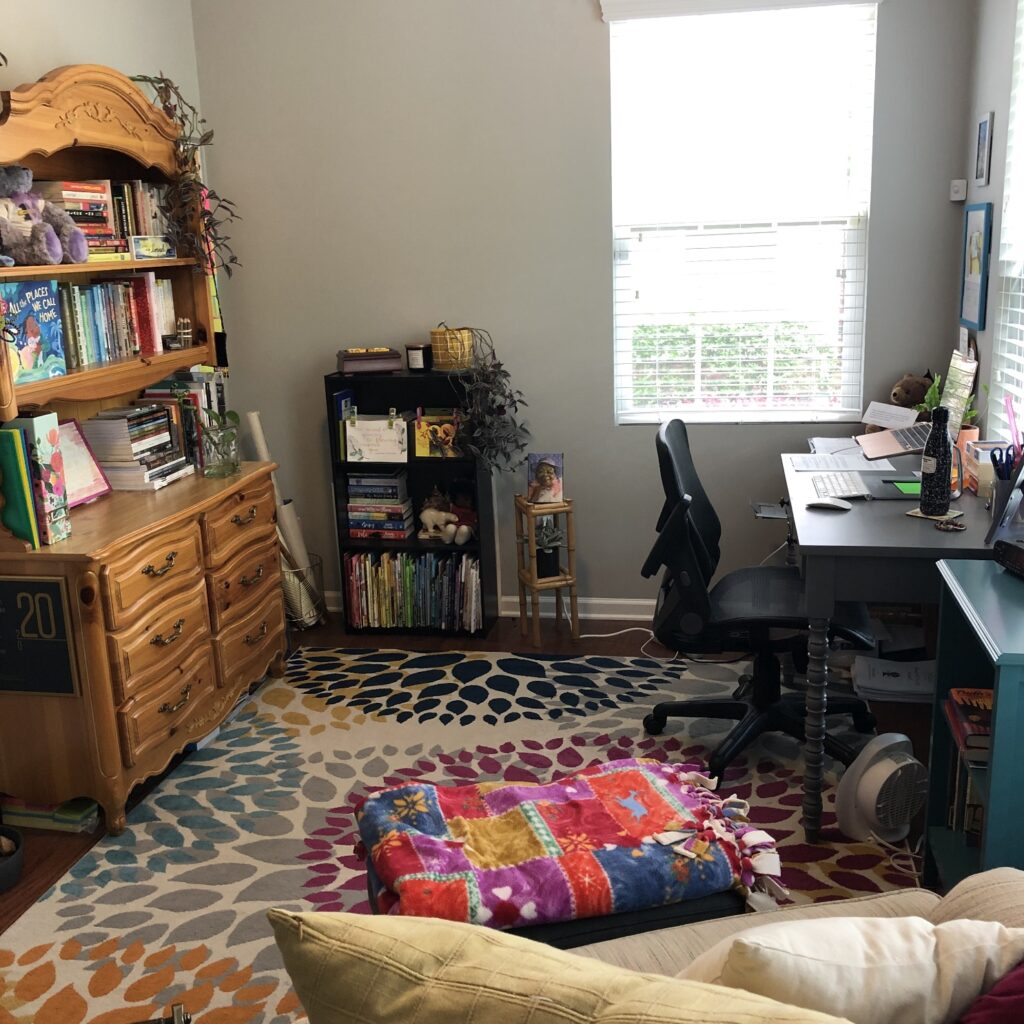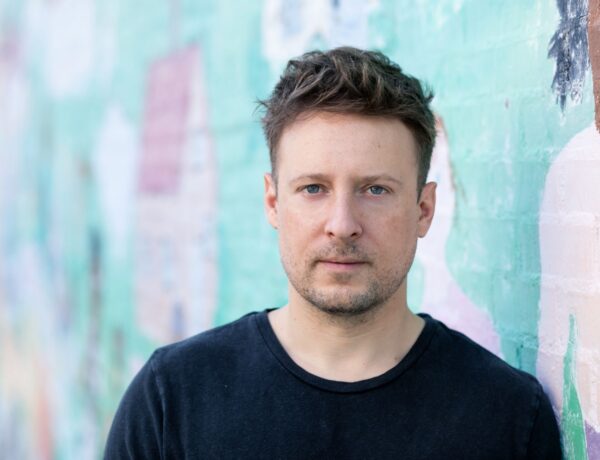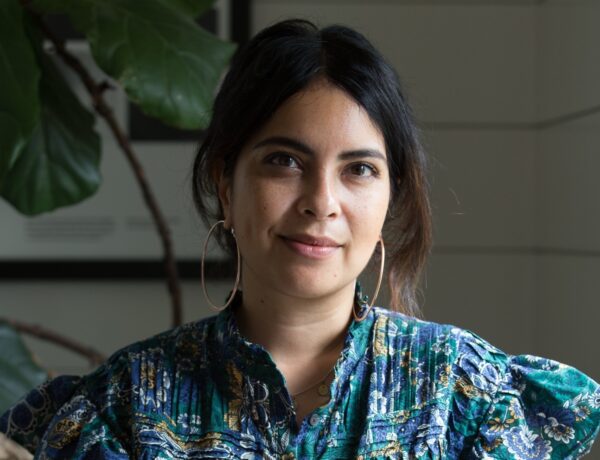Patrice Gopo is an award-winning essayist and the author of books for adults and children. Her essay collection, All the Colors We Will See, was Barnes & Noble Discover Great New Writers selection.
Her debut picture book, All the Places We Call Home, was inspired by one of the essays in her collection. As the child of Jamaican immigrants who was born and raised in Anchorage, Alaska, Patrice often writes about racial identity formation, immigration experiences, and the beauty of living a multifaceted life.
Patrice’s essays have appeared in a variety of publications, including Catapult, Charlotte Magazine, Creative Nonfiction, and AFAR Magazine. Her essay “That Autumn” received a notable mention in the Best American Essays 2020 and earned a National City and Regional Magazine Association award for best essay, criticism, and commentary.
In addition to other honors, Patrice is the recipient of a North Carolina Arts Council Artist Fellowship and a Sustainable Arts Foundation Award. When she’s not writing, Patrice hosts the podcast Picture Books Are for Grown-Ups Too! because she believes in the power of stories to help build connections between people.
Looking for inspiration to help you achieve your writing goals? Subscribe to our newsletter for exclusive insights into the routines, habits, and techniques of some of the most celebrated authors in history.
Hi Patrice, welcome to Famous Writing Routines, great to have you here with us today! Can you tell us a bit about your upbringing in Anchorage, Alaska, and how it shaped your perspective on the world?
I love to tell people that growing up in Alaska was beautiful and complicated and left me with so many gifts but also so many questions (enough to write a book about!). I recognize and celebrate how my background as the Black American daughter of Jamaican immigrants growing up in this place of contrasts gave me the willingness to explore (both physically and metaphorically) and the courage to chart new paths. These traits are invaluable to my writing life.
Your essay collection, All the Colors We Will See, delves into issues of identity, race, and immigration. What inspired you to explore these themes in your writing?
First, I absolutely love this quote from the poet Richard Blanco:
It’s said that every writer spends his or her entire life working on a single poem or one story. Figuratively, of course, this means that writers are each possessed by a certain obsession. As such, their entire body of work, in one way or another, is generally an attempt to dimension some part of that obsession, ask questions about it, answer them and then ask many new questions.
An American Dream, A Cuban Soul: Poet Richard Blanco Finds ‘Home’ | NPR
The moment I read the paragraph above and the following paragraph (if you follow the link), I recognized myself in the words. I explore issues of identity, race, and immigration because I have historically been obsessed with the question of “Where do I belong?” In All the Colors We Will See, my writing attempted to answer that question and ask many new questions. To attempt to answer not necessarily because I would find answers but because in the journey of searching, we often find the layers to help us make sense of our lives.
One of the essays in your collection, “That Autumn,” received a notable mention in the Best American Essays 2020 and earned a National City and Regional Magazine Association award for best essay, criticism, and commentary. Can you share with us what that essay is about and why it resonated with readers?
In the autumn of 2016, police officers in Charlotte, NC (where I live) shot and killed Keith Lamont Scott, a Black man. In the days following, Charlotte exploded with protests. At the time, I was also researching the destruction of Brooklyn, a historic Black neighborhood in Charlotte.
“That Autumn” weaves together the reality of what happened in Charlotte in the aftermath of Keith Lamont Scott’s death with what I discovered about the destruction of Brooklyn. I believe this essay resonated so much with readers because of my desire to examine the present moment through the reality of the past, to entwine both, and to let the horrors of this city and this country’s history speak into the present.
Do you struggle to stay focused while writing? You’re not alone! That’s why Famous Writing Routines recommends Freedom – the ultimate app and website blocker for Mac, Windows, Android, iOS, and Chrome. With over 2.5 million users, Freedom helps writers stay on task and avoid distractions. Get started for free today and reclaim your productivity!
In addition to writing for adults, you’ve also written a children’s book, All the Places We Call Home. What inspired you to write for a younger audience, and what do you hope your book can teach children?
I am a person who tells lyrical stories that celebrate joy, expand understanding, and foster compassion. I hope the words I put on the page will speak to these realities—realities that matter for adults and children. As an avid reader of children’s books and books for adults, I care about both audiences. Shortly after the publication of my essay collection, I recognized that my writing had something to offer children as well.
My debut picture book is actually based on one of the essays in All the Colors We Will See. I specifically wrote All the Places We Call Home because I wanted to illuminate how family stories of far-off lands help shape children, help form their identity, and help connect them with their broader world. Ultimately, All the Places We Call Home celebrates the beauty of living a multifaceted life. I repeatedly return to this theme in all of my writing. I wanted to share that truth with children.
You’re the host of the podcast Picture Books Are for Grown-Ups Too!, which is about the power of stories to build connections between people. Can you share with us a story that has had a significant impact on your life or worldview?
Yes, I am a huge believer in the power of stories to help us build connections, empowering us to recognize what we share in common and how our paths diverge. This work matters to me. And picture books are brief and miles deep, a great combination to help encourage connection.
Related to your question, though, in this episode of Picture Books Are for Grown-Ups Too, I talk about I Love My Hair by Natasha Anastasia Tarpley and illustrated by E.B. Lewis. I first encountered this book as an adult. It was the first time I’d seen a little girl who reminded me so much of the child I once was, celebrating her hair. Such a beautiful affirmation for me, even as an adult. When I think about how much it matters that we have stories that represent the diversity of humanity, my mind always goes back to that moment of finding that book.
Can you tell us about your writing routine? What does a typical day look like for you?
I should admit here that I don’t have established writing routines or typical days. I know some writers have that, but I never found that to be the case for myself. I’ll even confess that sometimes people ask me this question, and I’ve been known to answer with what my imagined writing routine might look like! Haha!
I started my writing life writing in the small moments, when my infant daughter was napping, as I waited for a pot of water to boil on the stove. Snatches of time here or there. I often tell people that I started writing in the gaps of life, scrawling words on the back of an envelope or writing initial paragraphs for essays in the notes section of my phone. This is how I began. And so even now, when mulling around a new idea for a project, I often return to those spaces of writing snippets in short periods of time. I think that constraint helps create a sense of urgency that enables me to get the words on the page.
If you could have a conversation with any author throughout history about their writing routine and creative process, who would that person be?
Oh, such an interesting question. I’m not sure I would choose to have a conversation with an author about such a topic. There is so much one can easily learn through reading their essays, etc. In addition, I think questions about routine are often particularly unique to the person. But what I would love to do is gather with a group of creatives across multiple industries and have a robust discussion about ideas, what we do, ideas, how we transform ideas into something more. That sounds super fun to me! Good food, good company, and hopefully some ice cream to end the whole event!
I’d love to know about the books you’re reading at the moment. What have been some of your favorite recent reads?
I loved, loved, loved Our Missing Hearts by Celeste Ng. I also enjoyed Start More than You Can Finish by Becky Blades, which isn’t really a writing craft book, but it can be an encouragement for the writing and creative life. And please go here to see all the recent picture books I featured on my podcast. They are all fabulous titles!
What advice do you have for aspiring writers who may be struggling to find their voice or their place in the literary world?
Keep writing. Keep reading. Keep studying the craft of writing. Years ago, near the start of my writing journey, I read a quote that said something like, “If you keep at it, the writer you are today will not be the writer you are six months from now.” I wish I could remember where I read that so I could give proper attribution for the idea because that idea has been such a gift to my writing life.
My specific practice of “keeping at it” has encompassed those three elements I listed at the beginning: keep writing, keep reading (in your genre and beyond), keep studying the craft of writing. In this way, I believe you will find your voice and your place in the literary world. Beyond this, I’d also add to be on the lookout for your literary community, the people who can support and encourage you in this journey, the people you can support and encourage as well!
What does your current writing workspace look like?
My office makes me so happy! I didn’t have a dedicated space where I worked for the first decade of my writing life, so I often would grab a spot wherever I could. We moved to a new place a couple of years ago, and in this new home, I was able to create a dedicated writing workspace. Just pure delight!

Affiliate disclaimer: Some links on this website are affiliate links. We may earn a small commission if you make a purchase through these links, but only promote products we truly believe in. We disclose affiliate links and give honest reviews.



No Comments